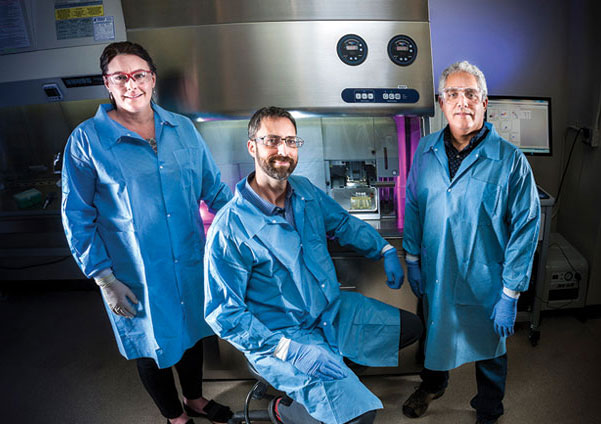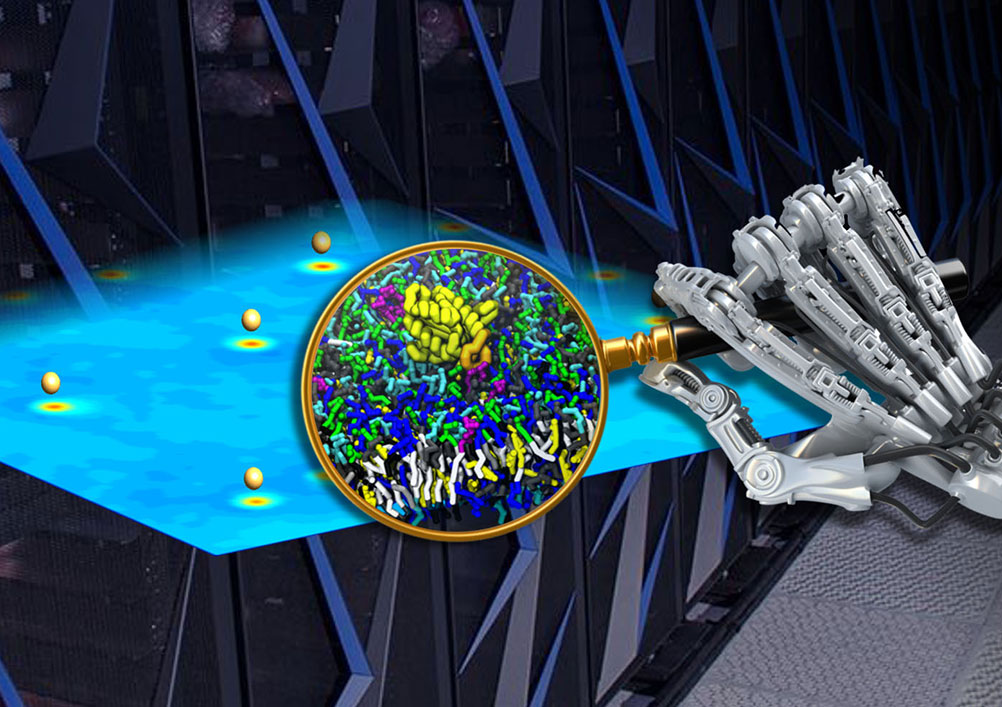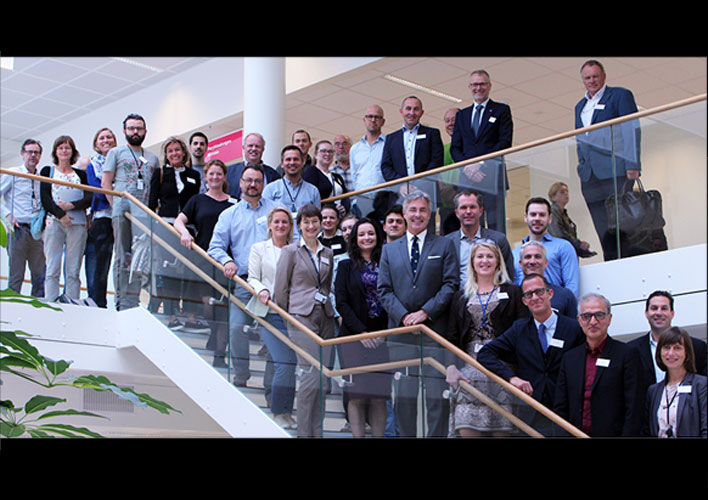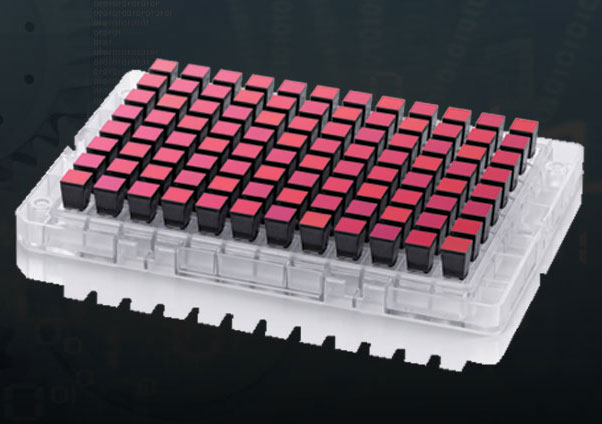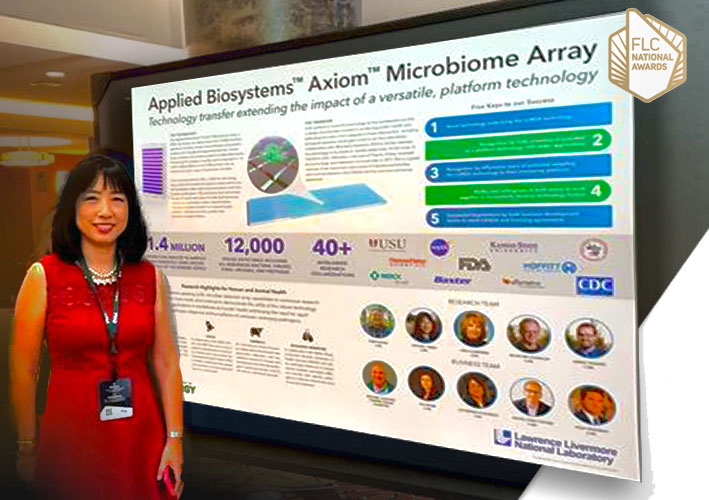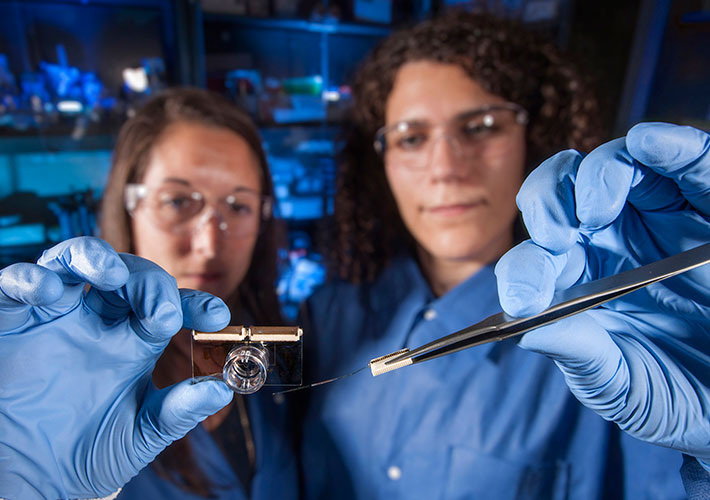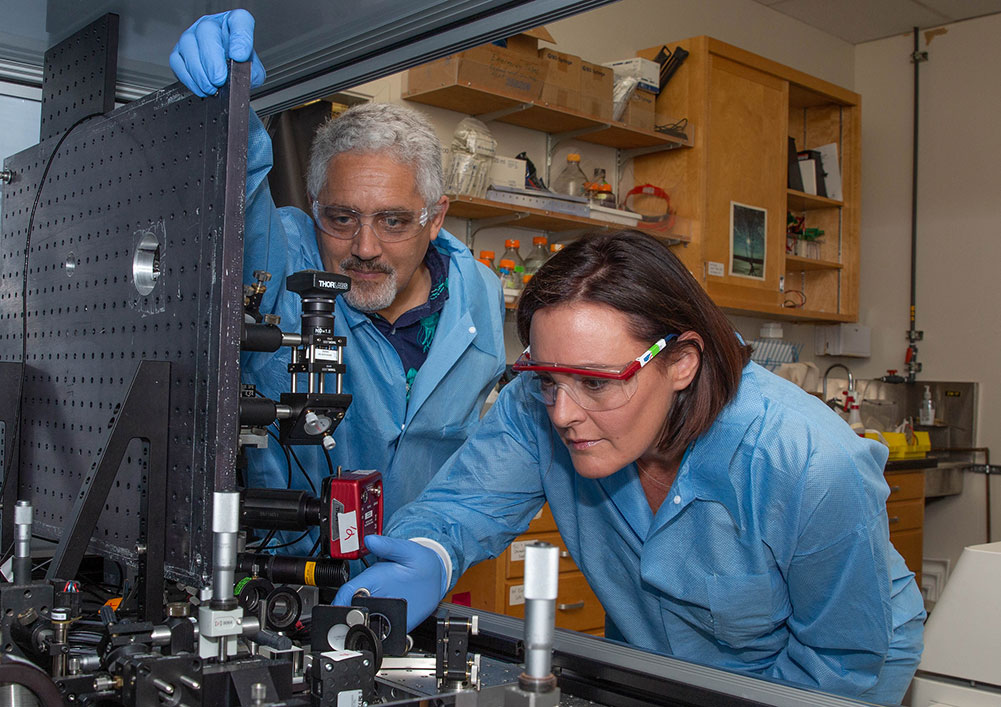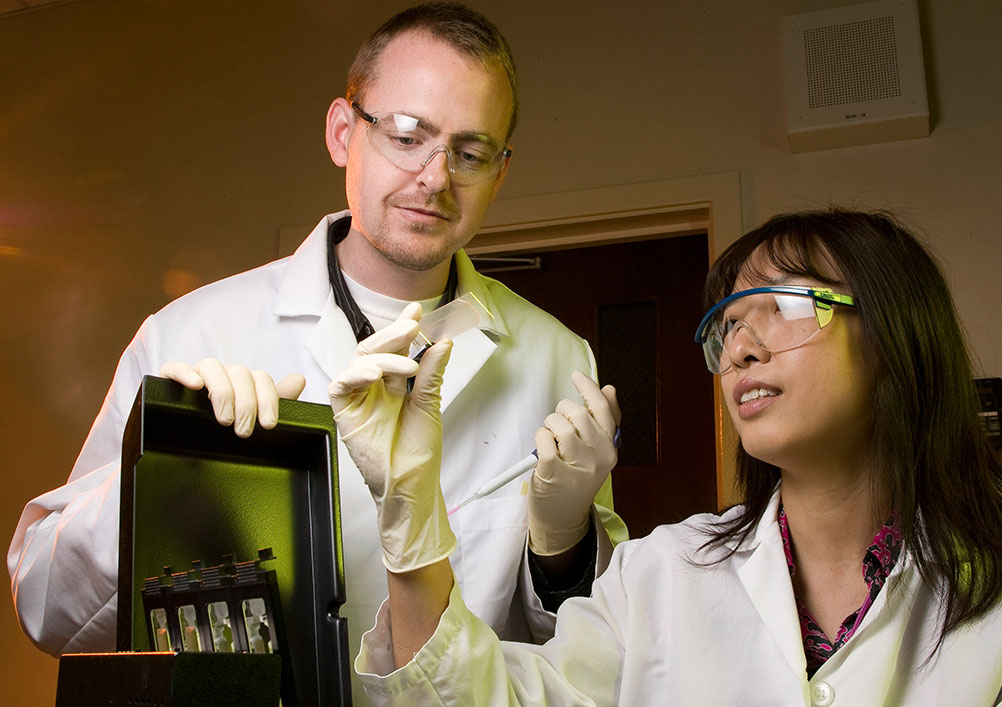A distinguished track record in developing, deploying, and delivering advanced biosecurity capabilities.
Featured Capabilities
Biological Applications of Advanced Strategic Computing (BAASiC)
Enabling a revolutionary approach to improve biological understanding, human health and biosecurity by applying advanced computational technology bringing together large-scale simulation, deep analysis of complex and diverse data, and new targeted sensor and measurement technologies. BAASiC is a multi-institution initiative, led by Lawrence Livermore National Laboratory (LLNL) and including partners across academia, industry, and government.The Laboratory works to keep the world safe from ever-changing biological and chemical threats by advancing the nation's capabilities in detection, characterization, and mitigation. The Laboratory teams with academia, industry, and other government agencies to take on the entire lifecycle of a biological threat – from awareness to prevention, preparedness to detection, and response to recovery. [See the Biosecurity Mission page for more information.]

Biomedical Accelerator Mass Spectrometry Instrument
Laboratory scientists use tools and capabilities provided by the Center for Accelerator Mass Spectrometry (AMS) to speed up drug development to fight diseases. AMS enables scientists to study the pharmacokinetics of carbon-14-labeled drugs administered at near negligible levels.

Lawrence Livermore Microbial Detection Array (LLMDA)
The Lawrence Livermore Microbial Detection Array (LLMDA) can identify thousands of different microbes within 24 hours for faster diagnosis and treatment of biological threats.

iCHIP to Assess Emerging Biosecurity Threats
LLNL's iCHIP is an integrated, tissue-based platform that replicates human physiological responses to drugs and biochemical agents. The iCHIP will speed development of medical countermeasures for diseases and provide methods to investigate the impact of exposure to biological and chemical agents and toxins without relying on animal testing.

Nanoparticle Vaccine Platform Protects against Dangerous Pathogens
Biotechnology experts are fine-tuning nanolipoprotein (NLP) technology to harness the body's immune response against biological threats. Using the body's innate immune response, the size and stability of the NLP platform makes it possible to develop customized vaccines to target a range of pathogens.

Second Skin Protection against Chemical and Biological Threats
Livermore scientists and their collaborators are developing a novel carbon nanotube membrane that can be used as uniforms for military and first responders to protect them from biochemical threats.

Understanding Aerosol Transport of Biological Threats
LLNL's novel microparticles, called DNATrax, boost our ability to understand aerosol transport of biological threats by allowing researchers to measure the movement of airborne contaminants and potentially provide key information for our nation's biothreat response and remediation systems.

Consequence Management for Transportation Assets
LLNL scientists have been exploring ways to rapidly restore critical transportation assets following a chemical or biological attack. Through collaborations with multiple agencies, they developed and tested a consequence management framework that stakeholders can use to manage restoration and recovery activities.










